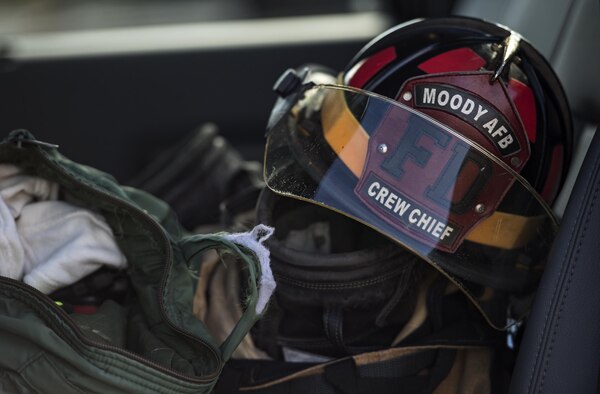 |
| New York Army National Guard Chief Warrant Officer 3, Joseph McCarthy (left) and Sgt. Yaanique Scott-- who are both members of the Fire Department New York-- were members of the Army National Guard aircrew who managed to save one life when a fiery plane crash occured on Long Island on Sunday, Feb. 26. McCarthy, the pilot-in-charge of the UH-60 callsign Empire 16 landed his helicopter within 200 feet of the burning private plane while Scott and other Army Guard Soldiers exited the aircraft to fight the fire and extract the pilot. ( Photos Courtesy Fire Department New York |
WESTHAMPTON BEACH, NY, UNITED STATES
02.28.2017
Story by Master Sgt. Raymond Drumsta
New York National Guard
WESTHAMPTON BEACH, N.Y. – An ordinary training day turned into a rescue mission for New York Army National Guard aviation Soldiers, who rescued a pilot from a fiery plane crash at Gabreski Airport here on the morning of Sunday Feb. 26.
“If it wasn’t for their quick response, and that really heroic action in a burning airplane, we would have three fatalities instead of two,” said Dan Boggs, lead investigator for the National Transportation Safety Board.
The crash took the lives of two people on board. Richard Rosenthal, 61, the pilot and owner of the plane, was rescued from the wreckage by the Guard Soldiers and evacuated to the hospital in critical condition. He is expected to survive.
New York Governor Andrew M. Cuomo also praised the Soldiers heroism and quick action.
The incident began as Rosenthal and the others were flying Rosenthal’s Ryan Navion F -- a single-engine plane, with a four-seat cockpit, that was built in 1948. They were practicing landings and crashed in a wooded area near the intersection of two runways at 11:45 a.m., according to accident reports.
Around the same time, the aircrew from Company B, 3rd Battalion 142nd Aviation, on board UH-60 Blackhawk helicopter, call sign “Empire 16,” were approaching the airport, located near the eastern tip of Long Island, to conduct sling-load training.
The company is based at Ronkonkoma, N.Y., closer to New York City.
They were two miles from the airport when the control tower radioed the Blackhawk pilots, Chief Warrant Officer 3 Joseph McCarthy and Chief Warrant Officer 2 Meghan Polis, and advised them of the crash.
The helicopter pilots found the crash site and landed about 200 feet from it.
With the Blackhawk’s fire extinguishers in hand, Warrant Officers Christopher Hansen and Aaron Pacholk, Chief Warrant Officer 2 Ronald Ramirez, and Sgt. Yaanique Scott leaped from the helicopter and ran through the trees and brush toward the plane.
“The aircraft was in flames, and (Rosenthal) was trying to get out,” said Pacholk, a resident of Mattituck, N.Y. Rosenthal held up two fingers to indicate that there were two other victims inside, he added.
There was “lots of smoke” coming from the plane and heavy smoke in the cockpit, recalled Scott, who is a New York City firefighter and Brooklyn, N.Y. resident. The back, front and bottom of the plane were on fire, and the flames were getting worse, he added.
Ramirez and Scott attacked the flames with fire extinguishers, the Soldiers recalled. Though Rosenthal was trying to escape via the left side of the plane, the wind was blowing smoke and heat toward that side, making it difficult to approach, Scott said.
“I went to the other side of the aircraft and was able to climb up on the wing,” he said.
Ramirez joined Scott and they continued to fight the flames, but the fire extinguishers had no effect, the Soldiers said. Scott and Ramirez handed the extinguishers off to Hansen and Pacholk and focused on saving Rosenthal.
Heat was melting the plastic parts of the canopy, Scott said.
“It was hot, but I didn’t notice,” Scott recalled. “It was cold that day, so I was wearing two sets of flight gloves.”
Placing his gloved hands on the canopy, he slid it back, creating a gap so Rosenthal could escape out the left side of burning plane, he said.
“Then he climbed out on his own,” Scott said.
Ramirez then dashed to the other side of the plane to help Rosenthal.
“I had to fight through the brush to get to him,” said Ramirez, of Farmingdale, N.Y. “He was disoriented.”
Rosenthal was also complaining of pain, broken ribs and a weak ankle, Ramirez said. He put Rosenthal’s left arm over his shoulder and gently walked him away from the burning plane, he explained.
“He was the one who went right up into the smoke and helped (Rosenthal) get away from the aircraft,” Pacholk said.
Hanson, a Lords Valley, Pa. resident, and Pacholk moved brush aside to help Ramirez walk Rosenthal walk a safe distance from the smoke and heat, the Solders recalled.
The other two victims appeared non-responsive and the fire was getting worse, so he got away from the plane, Scott recalled. He wished they could’ve saved the other victims, he added.
“The fire spread so fast after that, there was nothing we could do,” Pacholk said.
They made Rosenthal as comfortable as possible and waited for the rescue crew from Gabreski Air National Guard Base, which is adjacent to the airport, to arrive, Ramirez said.
Gabreski Airport Manager Anthony Ceglio described the Soldiers, first responders and others involved in the rescue and recovery effort as “true heroes.” James Vosswinkel, Rosenthal’s doctor, said Rosenthal’s family was “happy and grateful” to the troops and first responders for helping Rosenthal out of “such a devastating crash.”
“We were in the right place, at the right time, with the right crew, said McCarthy, of Orangeburg, N.Y. “As guardsmen, we train for situations like this, and that day everything came together.”





